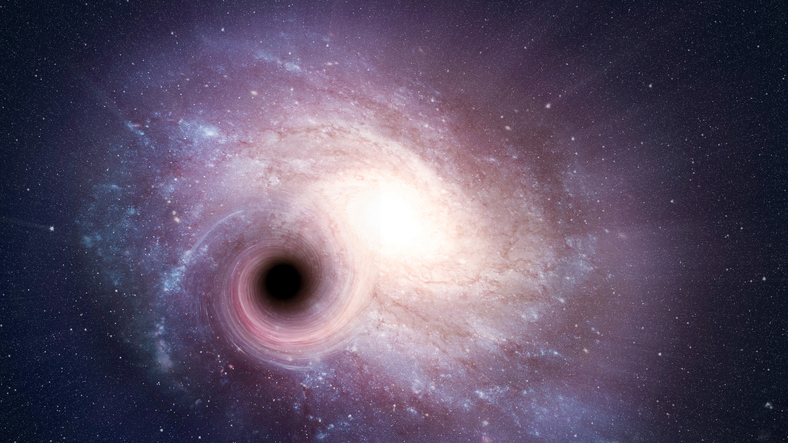The conventional wisdom among astronomers is that black holes – those exceptionally dense objects with gravity so powerful that not even light can escape – form in the violent explosion, called a supernova, of a massive dying star. But some, it turns out, may be born in a gentler fashion.
Researchers have identified a black hole that appears to have come into being through the collapse of the core of a large star in its death throes, but without the usual blast. It was observed gravitationally bound to two ordinary stars.
Black holes have previously been spotted orbiting with one other star or one other black hole in what are called binary systems. But this is the first known instance of a triple system with a black hole and two stars.
This system is located about 7,800 light-years from Earth in the constellation Cygnus. A light-year is the distance light travels in a year, 5.9 trillion miles (9.5 trillion km).
This black hole, called V404 Cygni, has been extensively studied since being confirmed in 1992. It previously was believed to be orbiting with only one other star, but data from the European Space Agency’s Gaia space observatory showed it instead has two companions.
The researchers said the black hole, with an estimated mass nine times greater than our sun, is in the process of eating one of its companions, a star about seven-tenths as massive as the sun. That star orbits the black hole every 6-1/2 days at a distance only about one-seventh of that separating Earth and the sun.
The black hole appears to be siphoning material off this star, which had puffed up in what is called a red giant phase as part of its natural aging process.
The researchers detected another star about 1.2 times as massive as the sun gravitationally bound to these two but rather far away, orbiting them every 70,000 years at a distance 3,500 times greater than that separating Earth and the sun.
The reason the researchers suspect a gentle birthing process for the black hole is simple. The triple system would have broken apart, they said, if the star that became a black hole had exploded.
A black hole is thought to form when a large star exhausts the nuclear fuel at its core and collapses inward due to its own gravitational pull, triggering an immense explosion that blows off its outer layers into space. The resultant crushed core forms the black hole.
But some astronomers have proposed another path to black hole formation called “direct collapse” in which the star caves in after expending all its fuel but does not explode.
“We call these events a ‘failed supernova.’ Basically, the gravitational collapse just acts too quickly for the supernova to be able to trigger and you get an implosion instead – which sounds super dramatic and awesome but it’s ‘gentle’ in the sense that you don’t expel any matter,” said Massachusetts Institute of Technology astronomer Kevin Burdge, lead author of the study published in the journal Nature.
The researchers estimated that the members of this triple system first formed about 4 billion years ago as ordinary stars.
“The triple system could not have survived if the black hole was born with a natal kick, so this discovery tells us that at least some black holes form without a kick – implying a quiet implosion rather than an explosive supernova,” added Caltech astronomer and study co-author Kareem El-Badry.
This system will not have three members forever, considering that the black hole is consuming its closer neighbor. That suggests that some known binary systems with a black hole and an ordinary star originally may have formed as a triple system, only to have the black hole gobble up one of its partners.
“People have actually predicted that black hole binaries might form mostly through triple evolution, but there was never any direct evidence until now,” El-Badry said.
(Reuters)




















